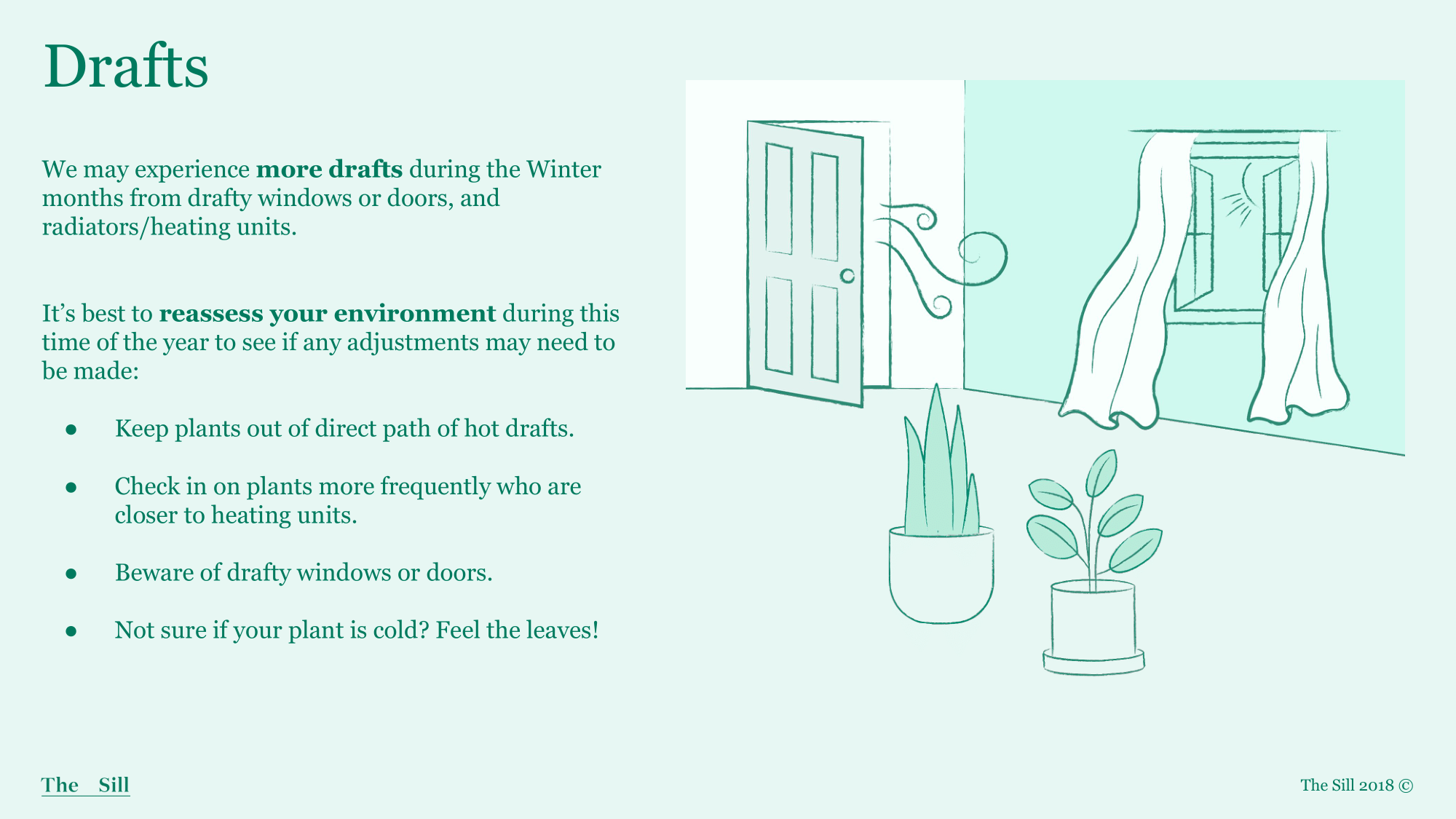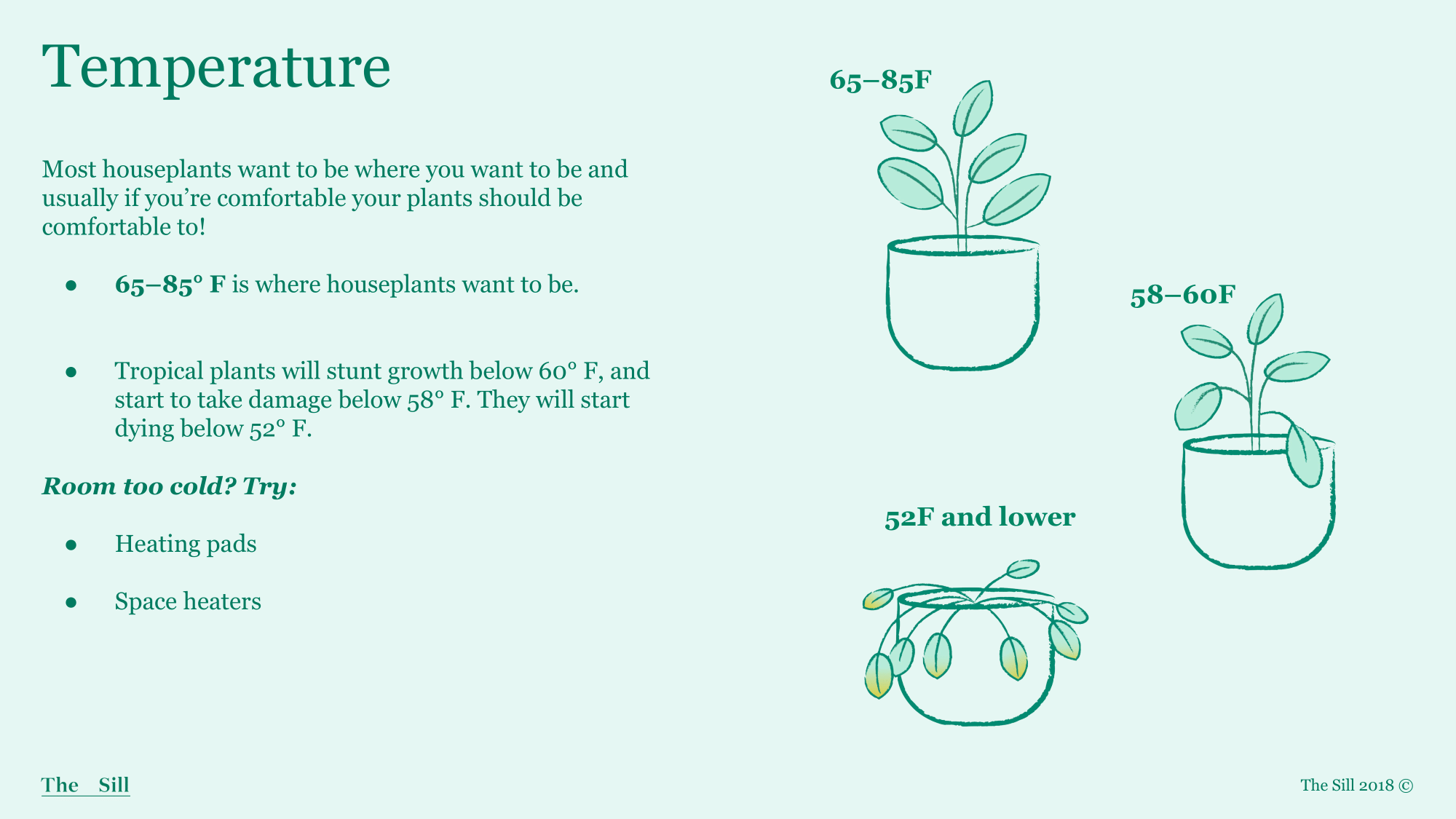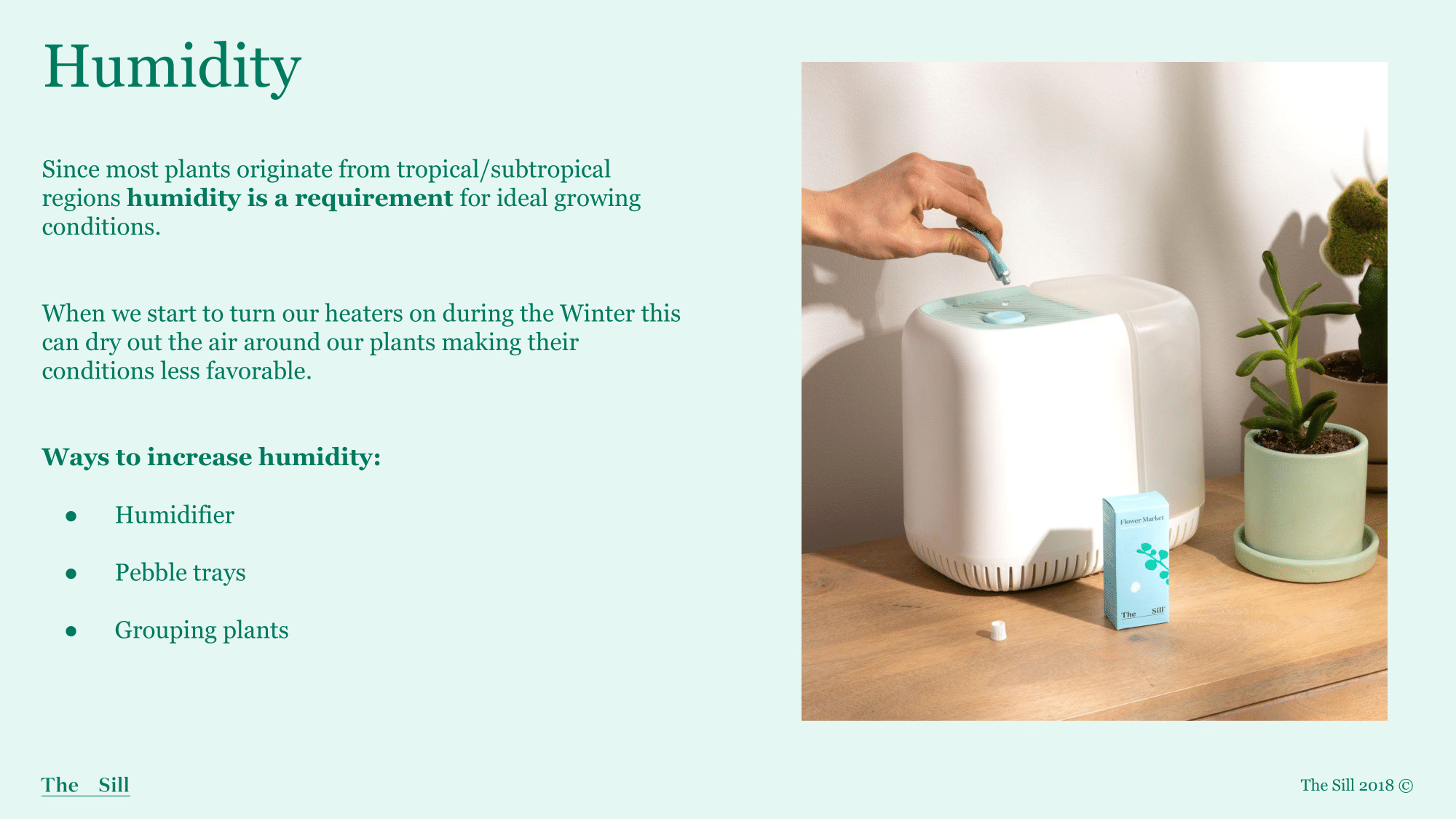Environment
Part 2 of 5

Drafts
- Hot Drafts - Radiators can cook a plant and cause plants to overheat, defoliate, and even yellow. It’ll be best to keep plants out of the direct path of your heating units to maintain a stable environment for plants. Also, even if plants aren’t receiving a direct draft, you will find that any plants that are closer to a radiator/heating unit you will need to water them more frequently then those that are farther away from heat sources. Since it is hotter in these areas plants will drink up water at a faster rate to prevent themselves from overheating, even if they aren’t receiving bright light like they were in the growing season.
- Cold Drafts - A strong cold draft from a window or door can kill a plant faster than anything else. The mechanism of damage is similar to overwatering (black, mushy rotting stems and leaves). Be sure to not open your windows during the Winter months, and if you need to move your plants away from your window for the time being. You can also tape or caulk or your windows, or even add a sheer curtain to help deter the drafts from hitting your plants.

Temperature
Getting thermometers or hygrometers in your plant rooms if they don’t have one already is the most efficient way to keep track of temperatures and even humidity levels in the home to ensure plants are comfortable.
- Heating Pads - Not the ones we use for ourselves but ones designed for seed starting. While these are primarily used for propagation/seed starting they can help to keep plants warm in chilly areas in the home. (placed underneath the planters)
- Space Heaters - For uninsulated rooms or ones without built in radiators, space heaters can be useful. When using, however, if tropical plants reside in the room it’ll be best to combine it with a humidifer to ensure the air doesn’t get too dry for the plants also.

Humidity
What is humidity? Humidity is the measure of water vapor dissolved in a given volume of air at a given temperature. As temperatures rise, the capacity of the air to hold water vapor increases. Humidity is measured on a scale of 0-100 relative humidity, and can only be measured when using a hygrometer. Most plants want to be between 30-40% relative humidity and be happy, while humidity loving plants like Calatheas and ferns require higher conditions between 50-70% relative humidity.
- Humidifier - Using a humidifier is really the best way to localize humidity most consistently for plants in a space. Cool or warm mist humidifiers work but warm mist aren’t as electrically efficient. Getting a larger humidifier= less refills during the day.
- Pebble trays - Great for plants with individual needs of higher humidity that helps to trap humidity between the leaves. Be sure to use a tray that is several inches larger in diameter than the diameter of the planter.
- Grouping plants - Easy, inexpensive way to boost humidity for plants by creating a mini microclimate. As water transpires from the leaves of plants they are trapped between the leaves of others.What about misting? Misting is NOT an effective way to raise humidity and increases the risk of infections for plants. You can, however, get away with misting plants that have thin/papery/lacey leaves, air plants, and most other epiphytes.
- 1. Light Changes
- 2. Environment
- 3. Clean The Green
- 4. Troubleshooting
- 5. Neem Application
